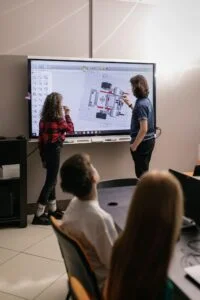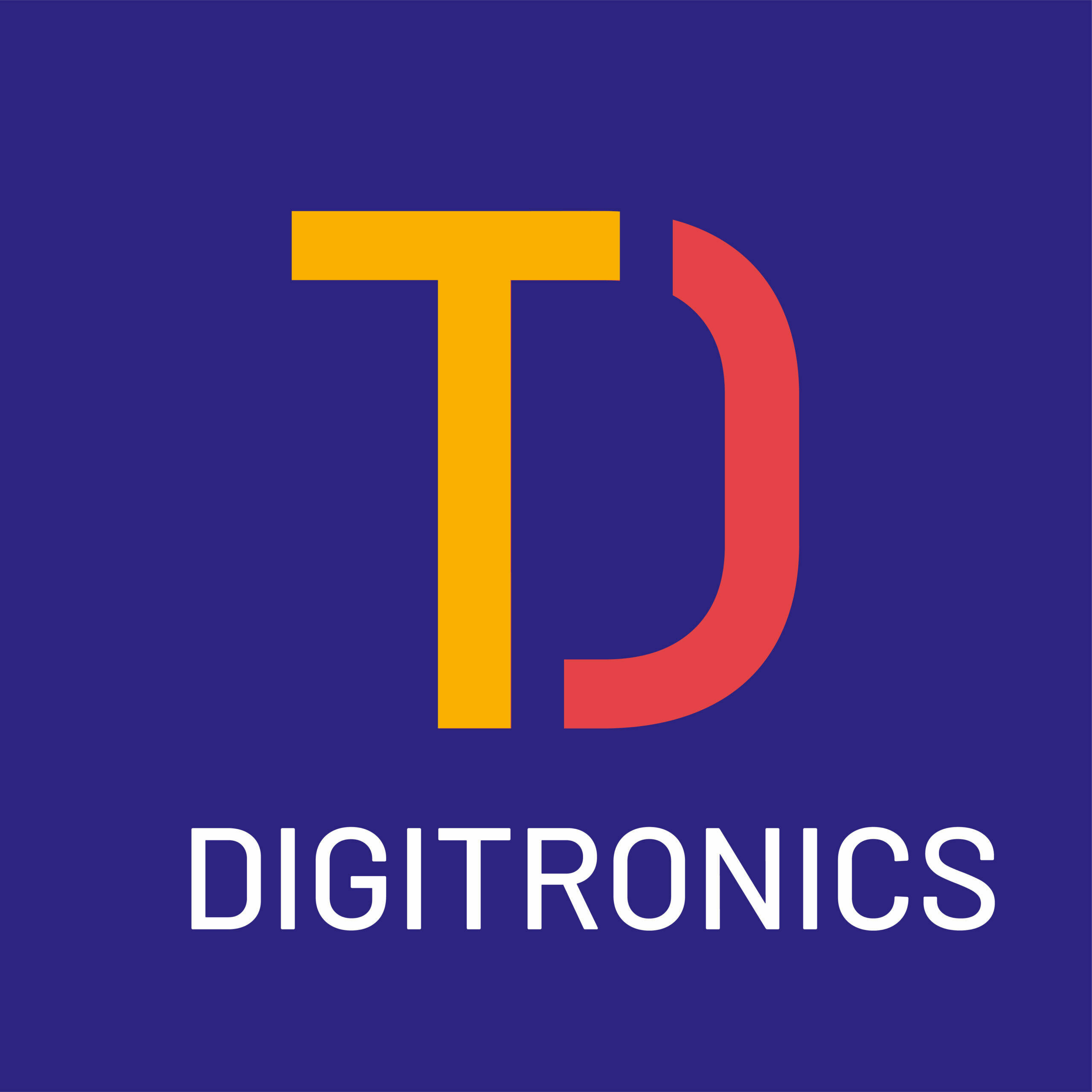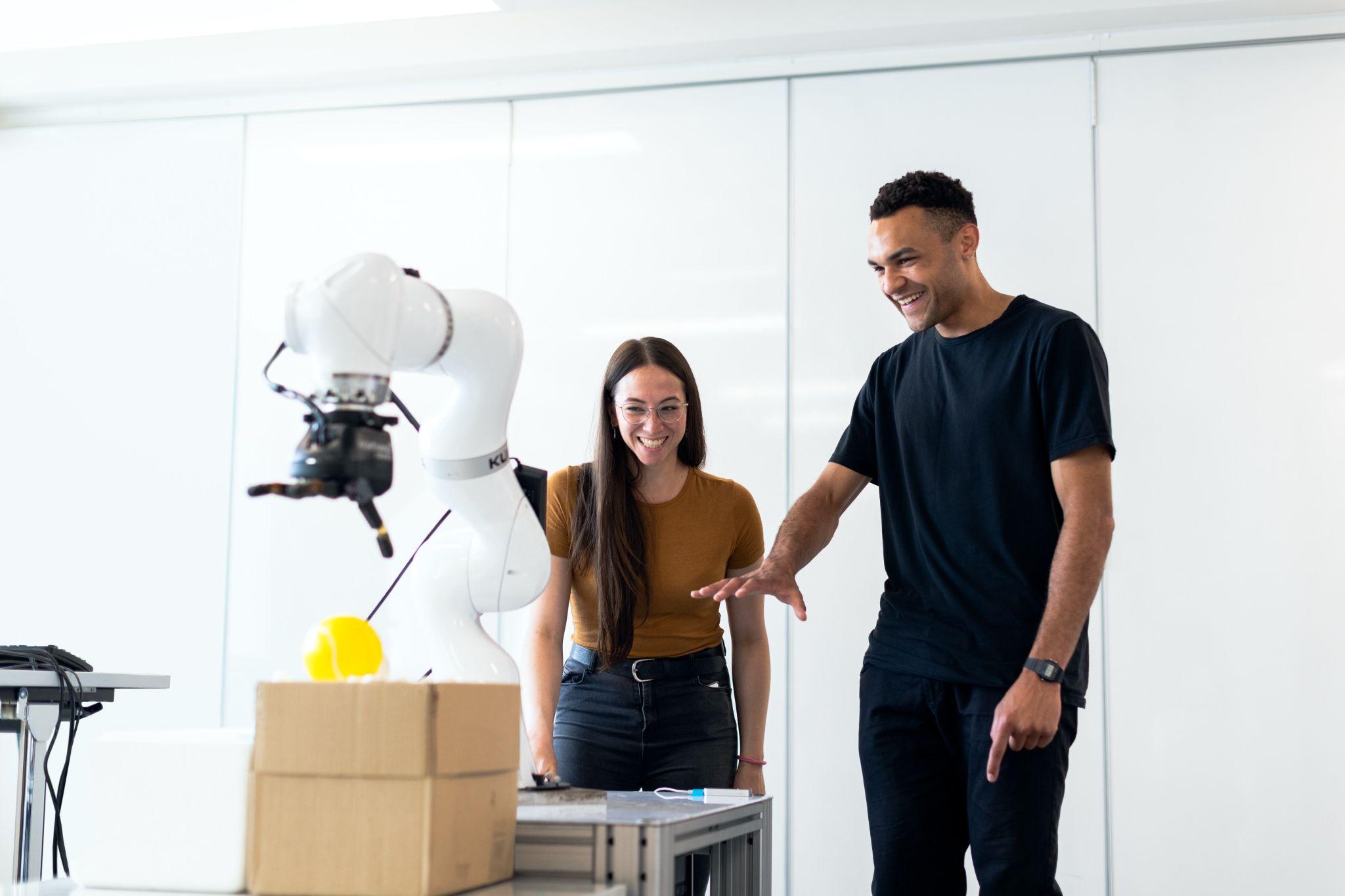Mechatronics is comprised of so many different areas that the employers demand a lot from specialists working in the field.
In turn, such requirements are passed onto young students who should be capable of entering the industrial world straight away after exiting from technical schools.
To properly teach students, it is necessary to have teachers who are properly prepared, teachers who must extend how they might interpret being proficient in the 21st century.
And therefore, teachers too need to be updated with all novel technologies as well as with new pedagogical models which can be effectively supported by the digital transformation so pervasive in our era.

An extremely interesting, yet challenging, opportunity taken out by the DIGITRONICS Erasmus+ project especially when dealing in the most advanced fields of information technology, mechanics, electronics, robotics: Mechatronics.
Teachers, as well as students (and workers), need to continuously update their skills and learn not only about new technologies, new industries, but also about new business models, as well as social, ethical and environmental implications’ impact.
Stakeholders representing the various facets of the mechatronics world, from industries active in mechatronics to educational institutions, have actively participated in laying down the DIGITRONICS Guidelines aimed at identifying and suggesting new educational approaches.
This is especially important when dealing with the current distance learning capabilities, which proved themselves quite valuable also in the pandemic crisis, where physical presence was difficult or even prevented by regulations. The possibility of carrying out lessons remotely and even work-based-learning with the teachers located hundreds of km away from students was tested and successfully demonstrated, and the Guidelines give support in implementing such approaches.
The DIGITRONICS Guidelines are specifically targeted at teachers, who need to master not only their specific subject matter, but the varying available methodologies, educational approaches and technologies for such a demanding area of learning such as Mechatronics.

One of main endeavors carried out in laying down such Guidelines was to foster and encourage the development of innovative solutions, which the Mechatronics teachers of today must be capable of identifying and managing.
As an example: the ability to include in teaching their expert matters (soft and technical skills) the environmental and social impacts throughout the product’s life cycle. This was underlined during our Focus Groups as one of the emerging skills and as a highly necessary competence, so that the students are trained to not only increase our material prosperity but also to improve our social and cultural fabric.
The DIGITRONICS Partners are strongly convinced that the publication of the Guidelines, titled “A trainer’s guide: an innovative online training based on (distance) learning modules” will substantially help teachers to feel more confident in using new teaching methodologies and approaches, through examples, best practices, checklists, references and templates.
In the near future pilot experimentations based upon the guidelines and the other findings of DIGITRONICS will be carried out to validate and adjust the approach and better contribute to the digitization of vocational training paths, through the participation of a community of experts in the field of Mechatronics belonging to European companies, Universities, VET Providers and educational institutions.
Keep posted on the DIGITRONICS news for updates and further material.



